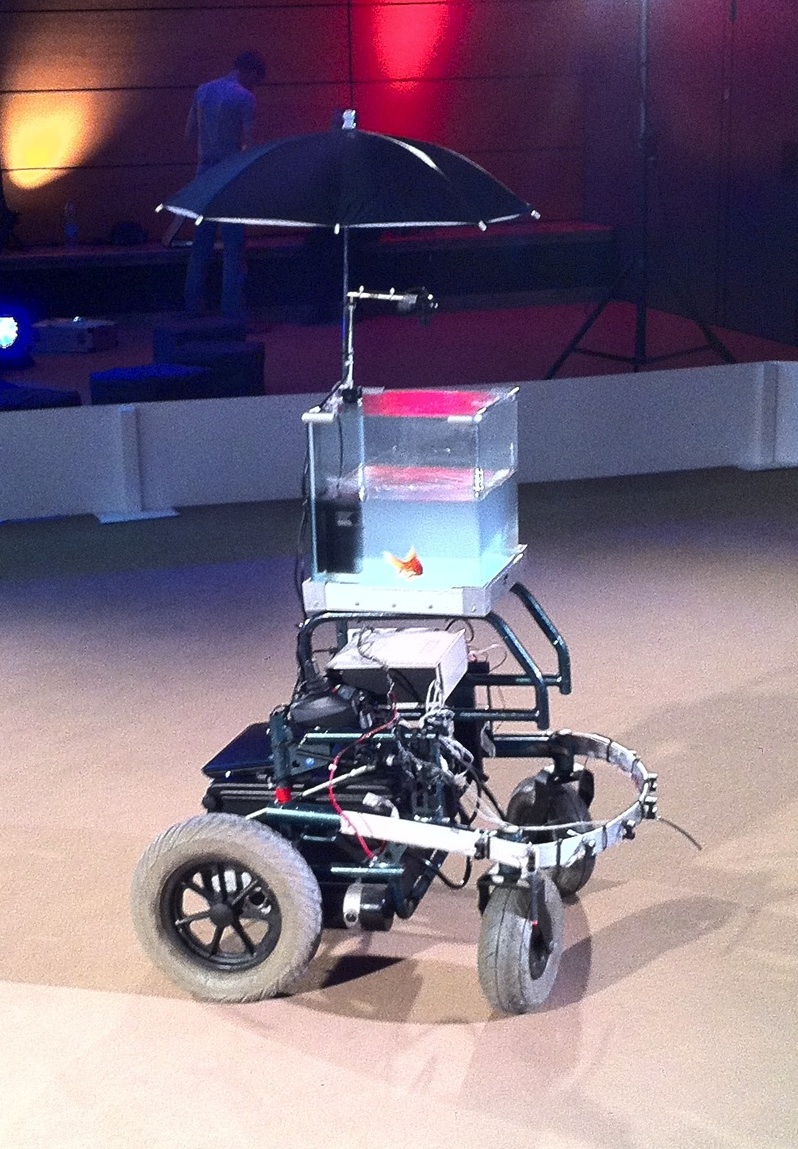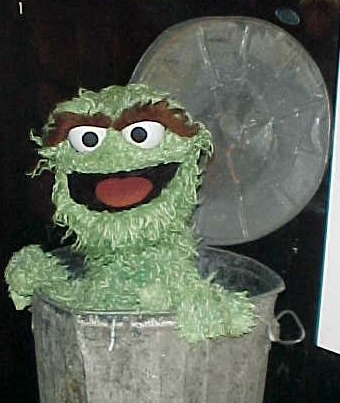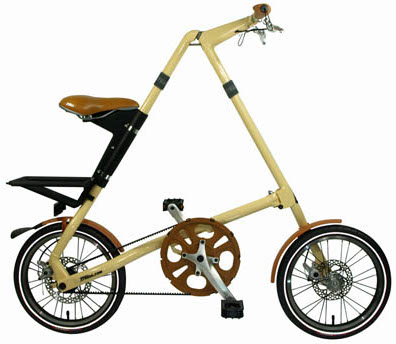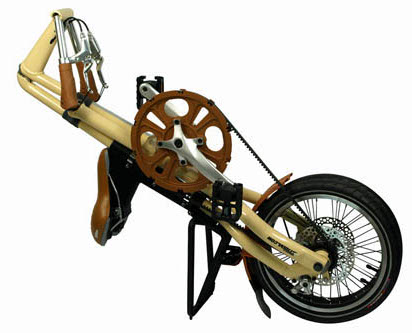Today was the first day of the seventh edition of the PICNIC festival in Amsterdam (hashtag #picnic12. The festival’s goal is “to discover opportunities for transformation: processes, cultures, products, services, models and experiences”. The theme for the year is New Ownership: the shift from top down to bottom up. This is my first time attending the festival. I am on the lookout for interesting insights and connections around the topic of how to innovate at scale. Below some of my general notes and thoughts on the day.
George Dyson – There is Plenty of Room at the Top
Dyson‘s title is of course a reference to Feynman’s 1959 talk There’s Plenty of Room at the Bottom. He talked a bit about Feynman’s role at Los Alamos. The digital world we live in today is the result of a “deal with the devil”: if scientist would help the government get nuclear weapons then they would get the computers.
There is room at the bottom, but there is also room at the top: a development of a global intelligence through networked machines and computation at all levels. We are starting to make machines that can think, machines that can replicate themselves and evolve. The founders of the computing age already saw this coming and questioned what this would mean and where it would take us (e.g. Norbert Wiener in Cybernetics).
His whole talk was looking back at what people have said 50-100 years ago and how those statements translate to current times. I can see why the festival programmers decided to open with him, but his talk was all description and very little prescription which made it less than interesting for me.
Byron Reese – The Great Disconnect
Reese started talking about how it used to be that most of the basic elements of life where decided for you at birth. A lot of aspects of your life came from where you were born and in what type of family. These things did not change, there was very little mobility. Today, if there is something about your life you don’t like, you have the ability to change it: you are unthethered. Who you are is no longer a set of circumstances, instead it is a set of choices. There is self-determination. If we combine that with the freedom of conscience then we can have a set of beliefs that can actually underpin a nation.
These changes are driven by the enormous amounts of technological developments that are happening around us. He thinks we are on the cusp of eliminating poverty, hunger and disease by solving them as technological problems (this reminds me of the book Abundance I recently read). I guess Reese is a true techno-optimist (unfortunately without the sense to talk about how many people in the word aren’t “unthethered” yet). He beliefs that even though we are unthethered, we aren’t used to that yet and still behave as if we are thethered in many ways. His advice: “make the most of it”.
Rich Pell – Strategies in Genetic Copy-Protection
Pell is director of the Center for PostNatural History, basically a museum dedicated to living things that were altered by people.
PostNatural is an adjective defined as biological life that has been intentionally and heritably altered by humans. This usually requires human mediated and controlled production. This leads to ethical questions, mainly around the ownership of life. There are now patents on life forms (Pasteur actually had the first patent on a life form: on yeast for beer) and a few strategies for genetic copy prevention are emerging:
- Security through obscurity: not giving any information about what your organism is or does.
- Genetic control: built-in reproductive control in the genes, initially a way to make sure that it was possible to contain the genetically engineered organism.
- Contractual agreement: a contract that prohibits breeding (standard in pure-bred lines for dogs for example).
Pell then showed Monsanto’s terms of agreement for farmers wanting to use their seeds. A legal text scrolled by for a long time of which the main point is that the seed is single-use and that the farmer doesn’t own the seed. You agree to the terms by opening the bag of seeds. Pell had to do some smart legal and physical “hacking” to be able to put Monsanto corn legally in their museum.
Dale Stephens – The Empowered Learner
Stephens didn’t enjoy school when he was twelve. He found a group of unschoolers and quit school with the reluctant permission of his parents.
Unschooling is a set of ideas that try to solve the current failings of education (cost are going up, while value of the education is going down (see here), no equality of opportunity, academic rigour disappearing). The term was coined by John Holt who wrote two books titled How Children Learn and How Children Fail. Holt was inspired by theSummerhill school (the school as a democratic community). Growing without schooling was a magazine that came out of this movement. I am surprised Stephens did not quote Illich’ Deschooling Society which will become a very important text in the next few years I believe (it is listed on the uncollege reading list I now see).
Unschooling is not the same as homeschooling. It isn’t isolating, Stephens learned in a group of 30 unschoolers who created their own learning experiences (“collaborative learning groups”). The basic idea is to trust people’s innate capacity to be curious.
When he didn’t go to college he was asked: “But what about beer and the girls?”. His standard answer to that question is now “I actually prefer guys and champagne”. Stephens has founded Uncollege (read the manifesto here) with the goal of decentralising education and has written the book Hacking Your Education through interviewing fifty people who have done something interesting with their lives without taking part in the traditional educational system.
Mike Lee- Macrometaengineering
Mike Lee talked about the creation of Appsterdam. Appsterdam is now 18 months old and Lee is the “mayor”. It is his attempt to create a tech ecosystem. In his talked he answered a few questions that I guess you could term macrometaengineering.
How do you attract entrepreneurs? You just have to better than the default (which Silicon Valley) and then you have to be easy to get to. One thing that is nice about Europe is the patent law. He quickly took a jab at patent law in the United States and how ridiculous it is to own ideas. Ideas come from zeitgeist, it is all about implementation.
How to create jobs? By making talented people and creating a technical labour surplus.
How to fund your company? It is incrediby easy to find money in the Netherlands. Check out le.mu.rs to see what he’ll be doing with his funding soon.
How to promote diversity? Very easy: stop discriminating and make sure that everybody is welcome.
How to open your data? How to keep your subsidies? How to resolve the crisis? Share the information with everyone in the world, please don’t care about borders.
How to build the future? Let’s figure it out if we are all fingers on the same hand. The future is ours to create.
I will have to take a closer look at Appsterdam as it seems like Lee has created a force for change out of nowhere.
Michael Schwarz – Re-Design for the Era of Sustainism
According to Schwarz we are in a new cultural era. To bring new culture into existence we first have to rename the world. So they came up with the word Sustainism (the new modernism: “less is more” is modernist, “do more with less” is sustainist) which is a lens to think about the world. Sustainist design is where connectivity (technology), sustainibility (nature) and community (people) meet. Everything is seen as interconnected and interdependent. Global goals are connected to local initiatives. Local is an ethical, aesthetic quality. Sustainism is not just the name for an era, it also is a movement and even an ethos. This makes sustainibility and social good the new drivers for innovation and design. Open source is the cultural operating system for this time. You are what you share (rather than what you have).
How can we design for sustainist qualities? And redesign the world? To summarize, you need to start with the following sustainist values in your design briefs and use them as key drivers for innovation:
- Connectedness – everything is connected
- Localism – Local as a quality
- Sharing – You are what you share
Also check out Open Sustainist Design.
Bas van Abel – If You Can’t Open It, You Don’t Own It
Van Abel started his talk with a picture from Occupy Wallstreet of a guy holding up a board saying: “Shit is fucked up and bullshit”. He is convinced that it is important to open up stuff because that allows you to understand the systems behind the stuff and that will enable you to take action.
Companies don’t like you to open up their things. Nintendo uses proprietary screws so that you can’t open their DS devices. Our “Electronic Anorexia” is a driver for thinner and thinner devices. These devices (e.g. the latest generation of Macbooks) are nearly impossible to fix yourself.
Makezine has the following quote: “If you can’t open it, you don’t own it”. They see ownership not just as property, but also as engagement. They have published The Maker’s Bill of Rights.
Van Abel then showed the problem with mobile phones and how they are produced. To solve this problem he is working on Fairphone an effort to bring a fairly produced smartphone to the market.
Anne Shongwe – Empowering Bottom Up
Shongwe from Afroes is working on a process that tries to inspire young Africans to re-imagine Africa. How do you move the mindset of young people from hopelessness to entrepreneurial and progressive? Mobile is the fastest growing media platform in Africa and has surpassed even radio in its usage. 73% of Africans have a mobile phone and this will be 85% by 2015. 450 young people in Africa have access to a mobile phone. Many organisations in Africa already use mobile technology to their advantage.
The mobile revolution is a social revolution for young people. Young people love playing games, so they’ve decided to create educational games. Their first game is Moraba a mobile game on the topic of gender based violence. They’ve put quite a lot of thought into how this works pedagogically.
Bonnie Shaw – Playful Communities and Urban Experiments
Shaw is dean of a chapter of the Awesome Foundation in Washington DC. She described herself through a Venn-diagram (a nexus between people, place and technology). The first few minutes of her presentation was completely conceptual and used words like collective individualism, aggregated, scale, disruptive, networks, local, etc. She completely lost me as she did not relate these themes or words to anything concrete. She then went on to talk about Snap-Shot-City as her introduction to social technology.
The Awesome Foundation chapters fund projects through $1000 grants that are scraped together by the chapter members. An example of a funded project is Petworth Jazz Project (Why is EVERYTHING called a project nowadays? Why isn’t this called a festival or a concert? I am starting a crusade with The New Vocabuary against the use of the word). I guess this is basically a localised version of crowdfunding.
Cesar Harada – Open Hardware for the Environment
Cesar asks the question of whether open source technology can help clean up or ameliorate our man-made natural disasters. He was in Kenya working at the iHub when the BP Oil Spill happened. Ushahidi was used to map the oil spill. He was then invited to MIT to work on oil spill clean up technology. They were working on long term, expensive and patented technology. Even though this was his dream job he decided to quit, because he wanted to make more impact on the short term. He connected to the public laboratory which was mapping the oil spill with balloons. He then focused on trying to clean up the oil spill with robotic sailboats.
He started Protei in which already a couple of engineering problems that came from trying to drag something heavy and still sail into the wind seem to have been solved. They created a robot boat with two steering rudders (front and back) and the ability to articulate itself. The boat is actually creating a whole new set of physics for sailing. This is community-generated technology: people from all over the world help to iterate this open hardware design.
[vimeo http://vimeo.com/27428620]
He calls this way of producing “using an innovation network”.
Daan Roosegaarde – The Business of Soft and Hard Capital
Daan Roosegaarde runs an international design laboratory for interactive projects. He thinks artist nowadays have to be half priest (ideology, the vision to go somewhere) and half entrepreneur (the ability to make it happen). He showed some interesting projects humanising technology.
Things like Dune which is a set of fibers reacting to their environment:
[vimeo http://vimeo.com/2719374]
Or Intimacy a dress that changes transparency based on how intimate you are with somebody (as measured by your heartbeat):
[vimeo http://vimeo.com/29952304]
And a few other of their projects. This was easily the best talk of the day.
Live Scrabble
The designers of the festival created a small game to get people talking to each other: playing scrabble with the letters on your badge. See some of the results here. If any team needs an “E” (worth five points) tomorrow, just ping me.











